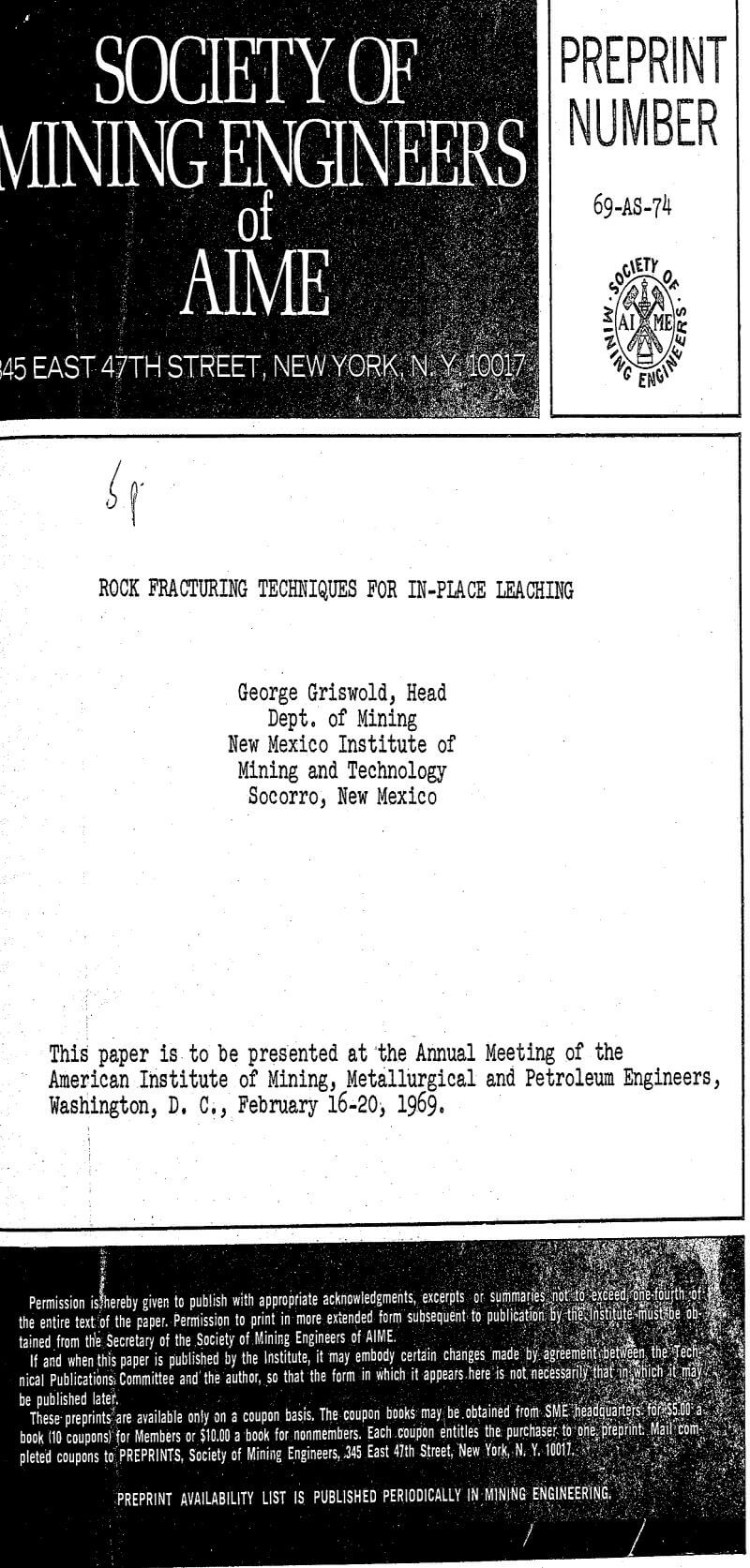The two most stringent parameters for in place fracturing of rock are the lack of any initial void space in the rock which to expand into and the ability to gain access only through drill holes. These two restrictions have proven so severe that as of today the only proven techniques for efficient fracturing are the contained nuclear detonation and hydrofracing. Both of these methods have highly developed technologies for their application.
In contrast to the high pressure explosions, hydrofrac pressures are only equal the static overburden stress. The cracks are formed either by overcoming the tensile strength of the rock or by fluid penetrating along on a pre-existing break. Cracks continue to propagate as long as fluid pressure is maintained above overburden. Fracture connections between wells spaced as much as one half mile apart have been reported.
Thus, the ideal fracturing mechanism appears to be a system of high volume but reasonably low pressure fluid injection. Two schemes for accomplishing this are under investigation by myself and others at New Mexico Tech. The simplest concept is a simple liquid oxygen and kerosene burner, the fuel and oxidant being transported down the borehole in liquid form and ignited on bottom.
Leaching of the fracture zone by this system should be accomplished by repeated injections and withdrawals through the implacement drill hole.

